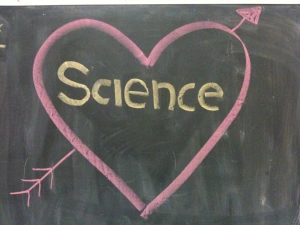Seismic Waves
Seismic waves are the energy from earthquakes. Seismic waves move outward in all directions away from their source. Each type of seismic wave travels at different speeds in different materials. All seismic waves travel through rock, but not all travel through liquid or gas. Geologists study seismic waves to learn about earthquakes and the Earth’s interior.
Wave Structure
Seismic waves are just one type of wave. Sound and light also travel in waves. Every wave has a high point called a crest and a low point called a trough. The height of a wave from the center line to its crest is its amplitude. The horizontal distance between waves from crest to crest (or trough to trough) is its wavelength.
Types of Seismic Waves
There are two major types of seismic waves. Body waves travel through the Earth’s interior. Surface waves travel along the ground surface. In an earthquake, body waves are responsible for the sharp jolts. Surface waves are responsible for the rolling motions that do most of the damage in an earthquake.
- P & S waves are called body waves because they travel through the Earth.
- Surface waves travel along Earth’s Surface.
______________________________________________________
Body Waves
Primary waves (P-waves) and secondary waves (S-waves) are the two types of body waves. Body waves move at different speeds through different materials.
Primary Wave (P-wave, compression)
P-waves are faster. They travel at about 6 to 7 kilometers (about 4 miles) per second. Primary waves are so named because they are the first waves to reach a seismograph. P-waves squeeze and release rocks as they travel. The material returns to its original size and shape after the P-wave goes by. For this reason, P-waves are not the most damaging earthquake waves. P-waves travel through solids, liquids, and gases.
Secondary Wave (S-wave, shear)
S-waves are slower than P-waves. They are the second waves to reach a seismograph. S-waves move side to side (or up and down). They change the rock’s shape as they travel. S-waves are about half as fast as P-waves, at about 3.5 km (2 miles) per second. S-waves can only move through solids. This is because liquids and gases don’t resist changing shape.
______________________________________________________
Surface Waves
Love waves and Rayleigh waves are the two types of surface waves. Surface waves travel along the ground outward from an earthquake’s epicenter. They have the lowest frequency, but the highest amplitude. This means surface waves are the slowest of all seismic waves, but are responsible for most damage. They travel at 2.5 km (1.5 miles) per second. There are two types of surface waves. Love waves move side-to-side, much like a snake. Rayleigh waves produce a rolling motion as they move up and backward. Surface waves cause objects to fall and rise. They also cause objects to sway back and forth. These motions cause damage to rigid structures during an earthquake.
Summary
- Body waves travel through the body of a planet. Surface waves travel along the surface.
- There are two types of body waves: P-waves travel fastest and through solids, liquids, and gases; S-waves only travel through solids.
- Surface waves are the slowest, but they do the most damage in an earthquake.
Slinky Lab – Modeling P & S Waves
Vocabulary
- amplitude: Height of a wave; this can be measured from a center line to the top of the crest, or to the bottom of the trough.
- body wave: Type of seismic wave that travels through the body of a planet; body waves include primary waves and secondary waves.
- crest: Highest point of a wave.
- Love wave: Surface wave that has a side-to-side motion, much like a slithering snake.
- primary wave (P-wave): Fastest type of body wave, capable of traveling through solids, liquids, and gases.
- Rayleigh wave: Surface wave that has a rolling motion.
- secondary wave (S-wave): Slower moving, transverse body wave that can only travel through solids.
- surface wave: Seismic wave that travels around the ground surface; the two types are Love and Rayleigh waves.
- trough: Lowest point of a wave.
- wavelength: Horizontal distance between two waves, as measured from crest to crest or trough to trough.
Source: www.ck12.org



